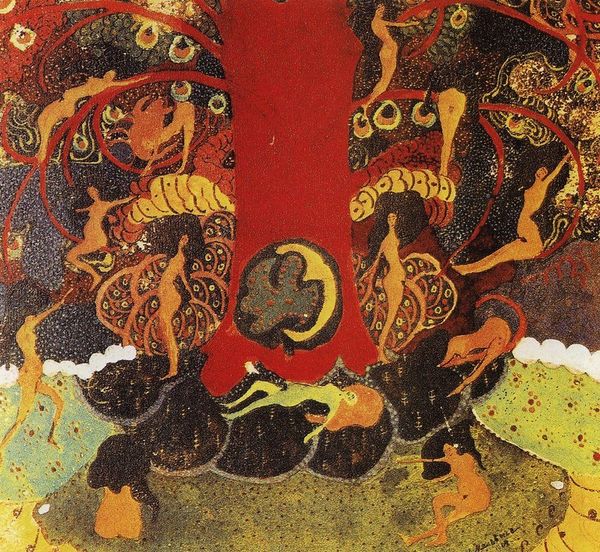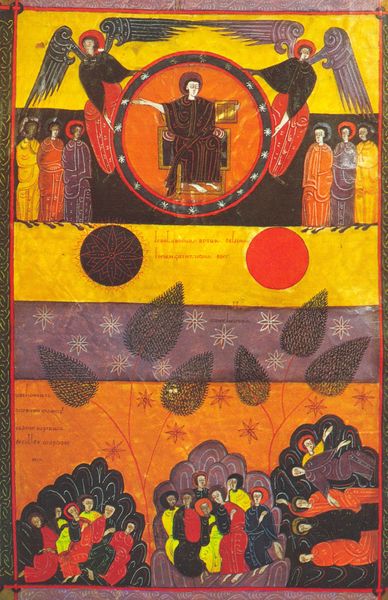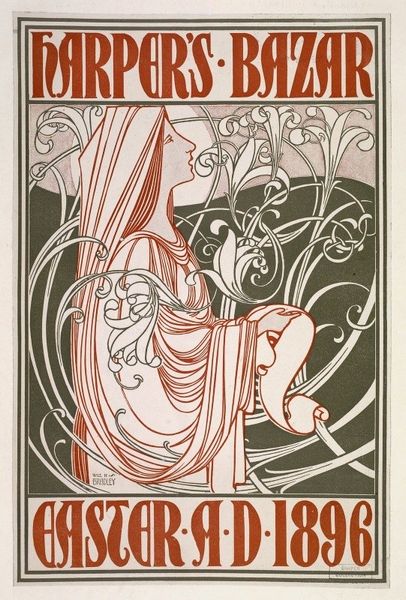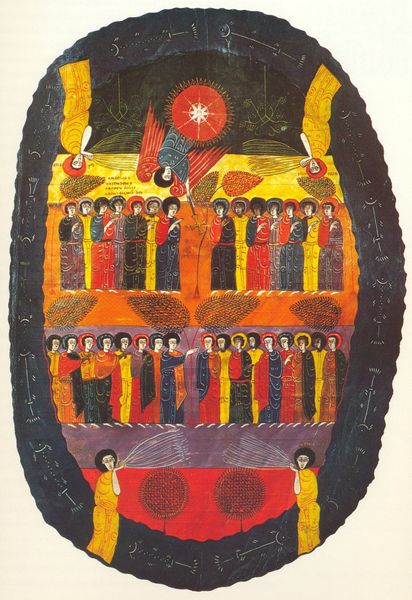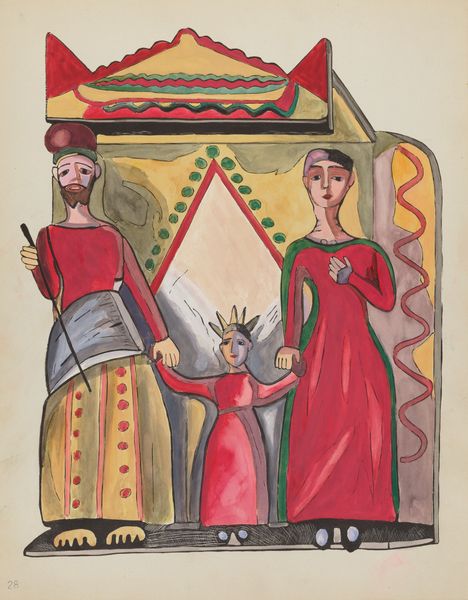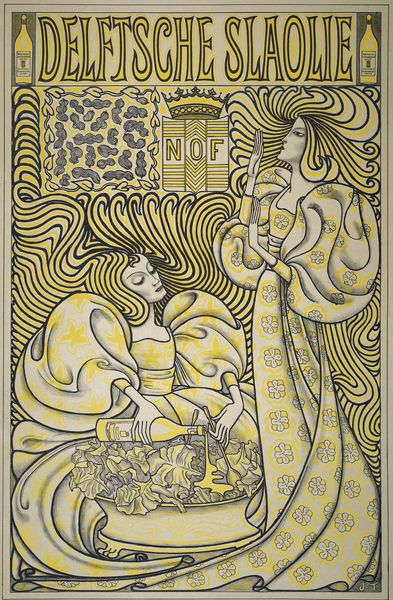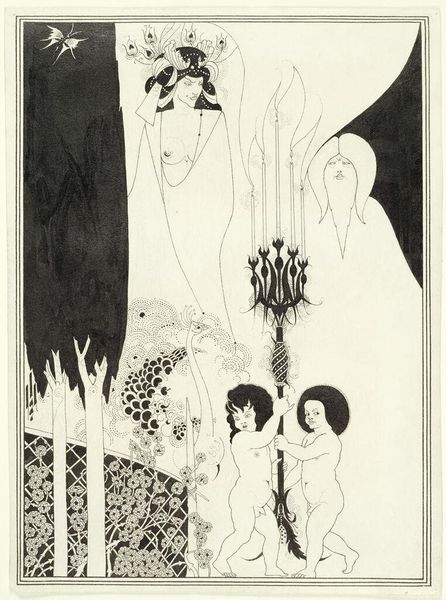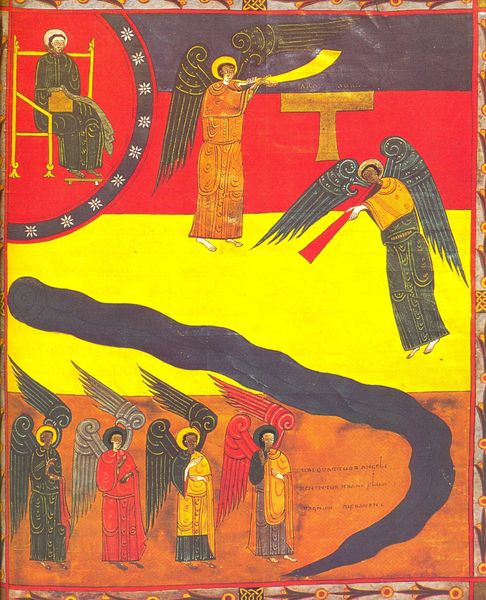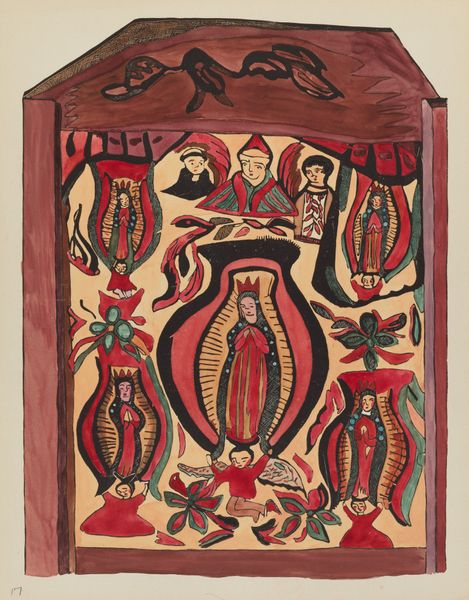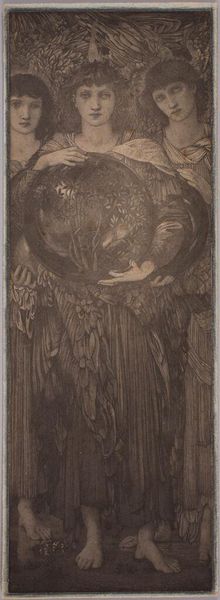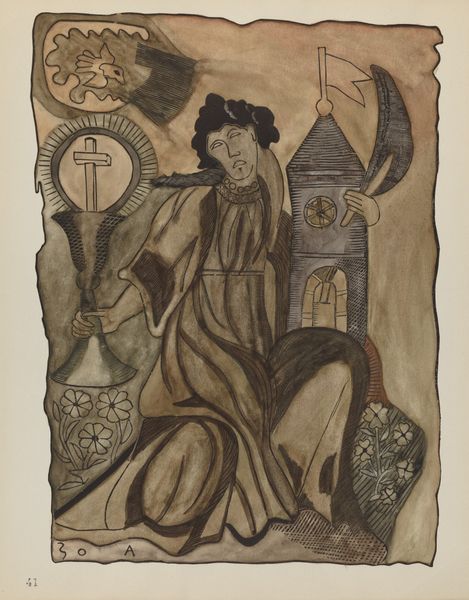
painting, watercolor
#
tree
#
allegories
#
abstract painting
#
allegory
#
symbol
#
painting
#
landscape
#
figuration
#
handmade artwork painting
#
oil painting
#
watercolor
#
forest
#
naive art
#
symbolism
#
watercolour illustration
Copyright: Public domain
Curator: Looking at Nicholas Roerich's "Good Nest (Good Tree, Consolation for Eyes)" from 1912, I'm immediately struck by how the red-clay colored land embraces an intense twilight. There's such a weight to that color! Editor: The feeling I get is one of ancient observation, as though these figures have gathered for centuries to protect something. I suppose that 'something' would be the obvious nest perched high on the central tree. There's a feeling of something looming...maybe precarity, despite its small size and sheltered location? Curator: Absolutely. And it begs the question: for whom is it precarious? Roerich created this during a turbulent period, rife with socio-political anxieties leading up to World War I. I find myself questioning if the painting’s symbolic content—the nest, the figures in possible ancient garb—is intended as allegory for displaced peoples...or something perhaps more esoteric. Editor: You know, it really reads like a protective, almost maternal space—visually signaled by this ovular composition... Curator: I couldn’t agree more. This could reflect the feminine protective impulse so present in traditional myth, especially with the looming environment surrounding those central figures! It certainly makes me think about questions of vulnerability and care. Who is doing the tending and the sheltering? Editor: And what does the tree symbolize, I wonder? Typically a marker of deep grounding and reaching to the heavens, the tree supports the vulnerable life in its nest. One is struck at how the composition centers the nest on this singular point. The landscape that bears it does appear as unstable...but I'm wondering why there aren’t more connections between those gathered to offer protection? Curator: Roerich was deeply interested in theosophy and esoteric knowledge. Perhaps the protective quality of this symbolic space comes from tapping into this shared experience? Ultimately, Roerich prompts us to reflect on societal structures—and in which crevices can vulnerable life find refuge. Editor: Yes...seeing those seated, cloaked, seemingly powerless people within such a symbolic and vulnerable framework reveals the potency of image-making as a type of shared protective measure, itself.
Comments
No comments
Be the first to comment and join the conversation on the ultimate creative platform.
